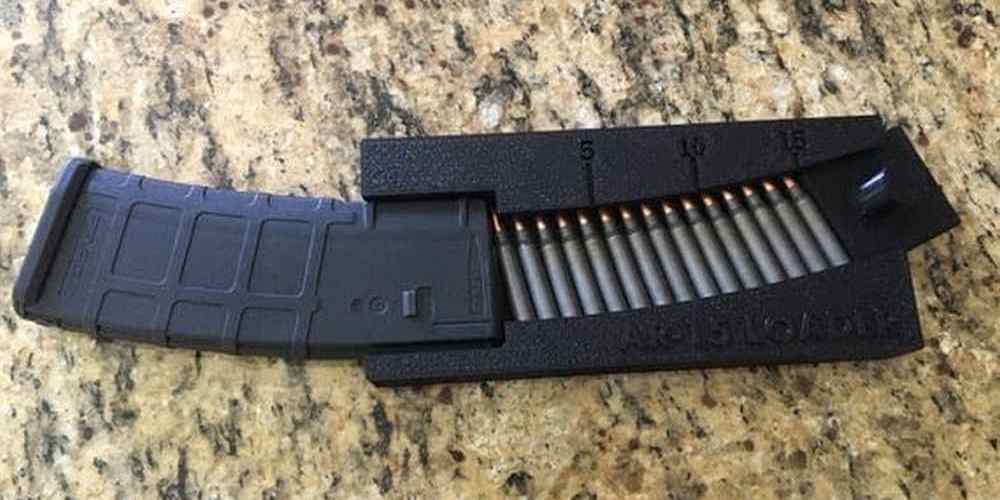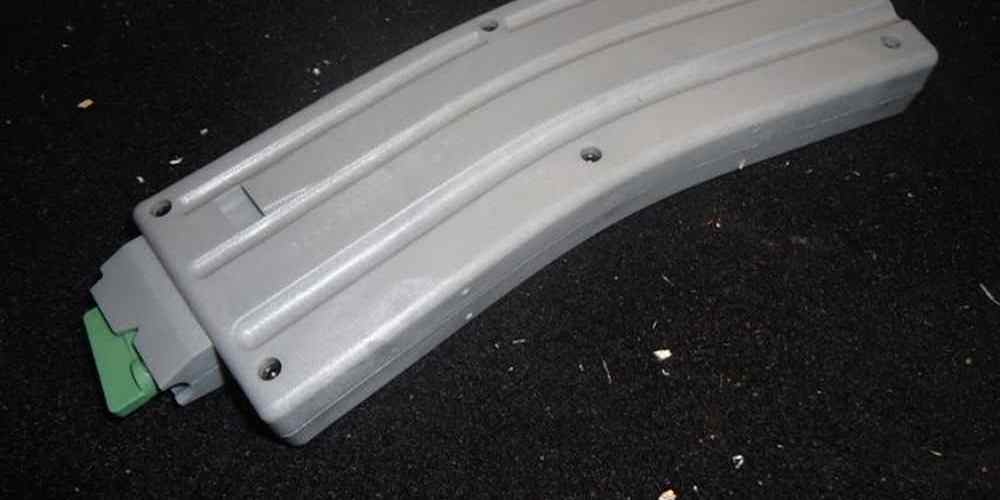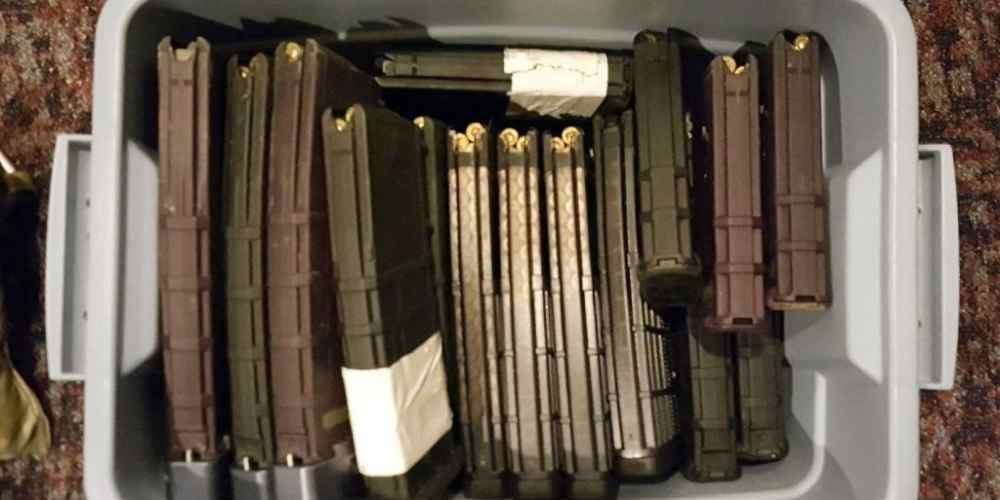“Stay informed, stay safe with AR15 Magazine Safety.”
Proper Storage and Handling of AR15 Magazines
When it comes to owning and operating an AR15 rifle, proper storage and handling of magazines is crucial for ensuring safety and preventing potential hazards. Magazines are an essential component of the AR15, as they hold the ammunition that powers the rifle. Improper storage and handling of magazines can lead to malfunctions, misfires, and even accidents. In this article, we will discuss the importance of proper storage and handling of AR15 magazines, as well as provide tips on how to identify and prevent potential hazards.
One of the most important aspects of proper magazine storage is keeping them clean and free of debris. Dirt, dust, and other contaminants can cause malfunctions and affect the performance of the magazine. It is recommended to regularly clean and inspect your magazines to ensure they are in good working condition. This includes removing any dirt or debris, checking for signs of wear or damage, and lubricating the moving parts as needed.
Another key factor in proper magazine storage is keeping them in a secure and dry location. Moisture can cause rust and corrosion, which can affect the functionality of the magazine. It is best to store magazines in a cool, dry place, away from direct sunlight and extreme temperatures. Additionally, storing magazines in a secure location, such as a locked cabinet or safe, can help prevent unauthorized access and ensure they are not damaged or tampered with.
When it comes to handling AR15 magazines, it is important to always treat them with care and respect. Rough handling, dropping, or mishandling magazines can cause damage and affect their performance. When loading and unloading magazines, be sure to do so carefully and follow the manufacturer’s instructions. Avoid forcing or jamming rounds into the magazine, as this can cause feeding issues and potentially lead to malfunctions.
Properly seating the magazine in the rifle is also crucial for ensuring safety and preventing hazards. Make sure the magazine is fully inserted and locked into place before firing the rifle. Failure to properly seat the magazine can cause feeding issues, misfires, and potentially lead to accidents. It is important to practice proper magazine insertion and removal techniques to ensure smooth and reliable operation of the rifle.
In addition to proper storage and handling, it is also important to regularly inspect and maintain your AR15 magazines. Check for signs of wear, damage, or corrosion, and replace any magazines that show signs of deterioration. It is recommended to rotate your magazines regularly to prevent spring fatigue and ensure they are in good working condition when needed.
By following these tips and guidelines for proper storage and handling of AR15 magazines, you can help ensure the safety and reliability of your rifle. Remember to keep your magazines clean, dry, and secure, handle them with care, and regularly inspect and maintain them to prevent potential hazards. Proper magazine safety is essential for responsible gun ownership and can help prevent accidents and malfunctions. Stay safe and happy shooting!
Regular Maintenance and Inspection of Magazine Components
When it comes to owning and operating an AR15 rifle, ensuring the safety of both yourself and those around you should always be a top priority. One often overlooked aspect of firearm safety is the regular maintenance and inspection of magazine components. In this article, we will discuss the importance of properly maintaining your AR15 magazines, how to identify potential hazards, and steps you can take to prevent accidents from occurring.

Magazines are a critical component of any firearm, as they hold and feed ammunition into the chamber. Over time, magazines can become worn or damaged, leading to malfunctions or failures that can result in dangerous situations. Regularly inspecting your magazines for signs of wear or damage is essential to ensuring their reliability and safety.
One common issue that can arise with AR15 magazines is feed lip deformation. The feed lips are the two metal lips at the top of the magazine that guide the rounds into the chamber. If these lips become bent or damaged, they may not properly feed ammunition into the chamber, causing misfeeds or jams. To prevent this from happening, carefully inspect the feed lips of your magazines for any signs of deformation or damage. If you notice any issues, replace the magazine immediately to avoid potential malfunctions.
Another potential hazard to be aware of is magazine spring fatigue. The spring inside the magazine is what pushes the rounds up into the chamber as they are fired. Over time, these springs can become worn out or lose their tension, leading to feeding issues or failures. To prevent this from happening, regularly check the tension of the magazine spring by fully loading and unloading the magazine several times. If you notice any issues with the spring, replace it with a new one to ensure reliable feeding.
In addition to inspecting the feed lips and magazine spring, it is also important to check the magazine body for any cracks or damage. A cracked magazine body can lead to misfeeds or failures, putting you at risk of injury. Inspect the entire body of the magazine for any signs of damage, and replace it if necessary to prevent potential hazards.
Properly maintaining and inspecting your AR15 magazines is crucial to ensuring their safety and reliability. By regularly checking for feed lip deformation, spring fatigue, and cracks in the magazine body, you can prevent accidents from occurring and keep yourself and those around you safe while using your firearm.
In conclusion, the safety of your AR15 magazines should never be overlooked. By regularly inspecting and maintaining your magazines, you can prevent potential hazards and ensure their reliability when you need them most. Remember to check for feed lip deformation, spring fatigue, and cracks in the magazine body, and replace any damaged components to keep yourself safe while using your firearm. Stay vigilant, stay safe, and happy shooting!
Understanding the Risks of Using Damaged or Defective Magazines
When it comes to firearm safety, one of the most important aspects to consider is the condition of your equipment. This includes not only the firearm itself but also the magazines used to feed ammunition into the gun. In the case of an AR15, the magazine plays a crucial role in the proper functioning of the weapon. However, using damaged or defective magazines can pose serious risks to both the shooter and those around them.
One of the most common issues with AR15 magazines is feed lip damage. The feed lips are the two metal lips at the top of the magazine that guide the ammunition into the chamber of the gun. If these lips are bent, cracked, or otherwise damaged, they may not be able to properly hold and feed the rounds into the gun. This can result in misfeeds, jams, and potentially dangerous malfunctions.
Another potential hazard with AR15 magazines is spring fatigue. The spring inside the magazine is what pushes the rounds up into the gun as they are fired. Over time, this spring can become worn out or weakened, leading to feeding issues and unreliable performance. It is important to regularly inspect and replace the magazine spring to ensure proper function and prevent malfunctions.
In addition to feed lip damage and spring fatigue, another common issue with AR15 magazines is follower tilt. The follower is the part of the magazine that pushes the rounds up as they are fired. If the follower becomes tilted or misaligned, it can cause feeding issues and malfunctions. Regularly inspecting the follower for signs of wear or damage can help prevent these issues from occurring.
It is also important to consider the material of the magazine itself. AR15 magazines are typically made of metal or polymer, with each material having its own advantages and disadvantages. Metal magazines are generally more durable and long-lasting, but they can be prone to rust and corrosion if not properly maintained. Polymer magazines are lightweight and resistant to rust, but they may be more prone to cracking or breaking under heavy use.
To prevent potential hazards associated with damaged or defective magazines, it is important to regularly inspect and maintain your AR15 magazines. This includes checking for feed lip damage, spring fatigue, follower tilt, and any other signs of wear or damage. If you notice any issues with your magazines, it is best to replace them immediately to ensure safe and reliable performance.
In conclusion, understanding the risks of using damaged or defective AR15 magazines is crucial for firearm safety. By regularly inspecting and maintaining your magazines, you can prevent malfunctions, misfeeds, and other potential hazards that may arise. Remember, the magazine is an essential component of your firearm, and ensuring its proper function is key to safe and effective shooting.
Best Practices for Loading and Unloading AR15 Magazines Safely
When it comes to owning and operating an AR15 rifle, safety should always be the top priority. One area where safety is often overlooked is in the loading and unloading of magazines. Improper handling of magazines can lead to accidents and malfunctions, so it’s important to understand the best practices for loading and unloading AR15 magazines safely.
One of the most common hazards when loading and unloading magazines is the potential for accidental discharges. This can occur when a round is not properly seated in the magazine, causing it to jam or misfire when the rifle is fired. To prevent this from happening, it’s important to always visually inspect each round as you load it into the magazine. Make sure the bullet is seated correctly and that there are no obstructions or deformities that could cause a malfunction.
Another potential hazard when loading and unloading magazines is the risk of damaging the feed lips. The feed lips are the part of the magazine that guides the rounds into the chamber of the rifle. If the feed lips become bent or damaged, it can cause feeding issues and malfunctions. To prevent this from happening, be sure to use the proper technique when loading and unloading magazines. Avoid slamming the magazine into the rifle or forcing rounds into the magazine, as this can cause damage to the feed lips.
Properly storing and maintaining your magazines is also crucial for safety. Magazines should be stored in a cool, dry place away from moisture and extreme temperatures. This will help prevent rust and corrosion, which can cause malfunctions and feeding issues. It’s also important to regularly clean and inspect your magazines for any signs of wear or damage. If you notice any cracks, dents, or other defects, it’s best to replace the magazine to ensure safe and reliable operation.
When unloading a magazine, always be sure to follow the proper procedure to prevent accidents. Point the rifle in a safe direction and remove the magazine by pressing the magazine release button. Once the magazine is removed, visually inspect the chamber to ensure there are no rounds remaining. It’s also a good idea to cycle the action of the rifle a few times to double-check that the chamber is clear. Always treat every firearm as if it is loaded, even if you believe it to be empty.
In conclusion, loading and unloading AR15 magazines safely is essential for preventing accidents and malfunctions. By following these best practices, you can ensure that your rifle operates reliably and safely every time you use it. Remember to always visually inspect each round as you load it into the magazine, avoid damaging the feed lips, store and maintain your magazines properly, and follow the correct procedure when unloading a magazine. By taking these precautions, you can enjoy your AR15 rifle safely and responsibly.
Importance of Training and Education on Magazine Safety for AR15 Users
The AR15 is a popular firearm among gun enthusiasts and sports shooters. With its versatility and customization options, it has become a go-to choice for many gun owners. However, with great power comes great responsibility, and it is crucial for AR15 users to be aware of potential hazards associated with the firearm, particularly when it comes to magazine safety.
One of the most important aspects of using an AR15 safely is proper training and education. Many accidents involving firearms occur due to a lack of knowledge or understanding of how to handle them safely. This is why it is essential for AR15 users to undergo training on magazine safety to prevent accidents and injuries.
Training on magazine safety should cover a range of topics, including how to properly load and unload magazines, how to store them safely, and how to handle malfunctions or jams. It is also important for users to understand the different types of magazines available for the AR15 and how to choose the right one for their needs.
Proper training can help users develop good habits when it comes to magazine safety, such as always keeping magazines unloaded when not in use, never pointing a loaded magazine at anyone, and always treating a magazine as if it were loaded. These simple practices can go a long way in preventing accidents and ensuring the safety of everyone around the firearm.
In addition to training, education is also key when it comes to magazine safety. AR15 users should be aware of the potential hazards associated with using magazines, such as the risk of misfeeds, jams, or malfunctions. By understanding these risks, users can take steps to prevent them from occurring and ensure the safe operation of their firearm.
Education on magazine safety should also include information on how to properly clean and maintain magazines to ensure they function correctly. Regular maintenance is essential for keeping magazines in good working condition and preventing malfunctions that could lead to accidents.
Overall, training and education on magazine safety are essential for AR15 users to prevent accidents and injuries. By understanding the potential hazards associated with using magazines and developing good habits when it comes to handling them, users can ensure the safe operation of their firearm and protect themselves and those around them.
In conclusion, magazine safety is a crucial aspect of using an AR15 responsibly. Proper training and education on magazine safety can help users prevent accidents and injuries, as well as ensure the safe operation of their firearm. By developing good habits and understanding the potential hazards associated with using magazines, AR15 users can enjoy their firearm safely and responsibly.







